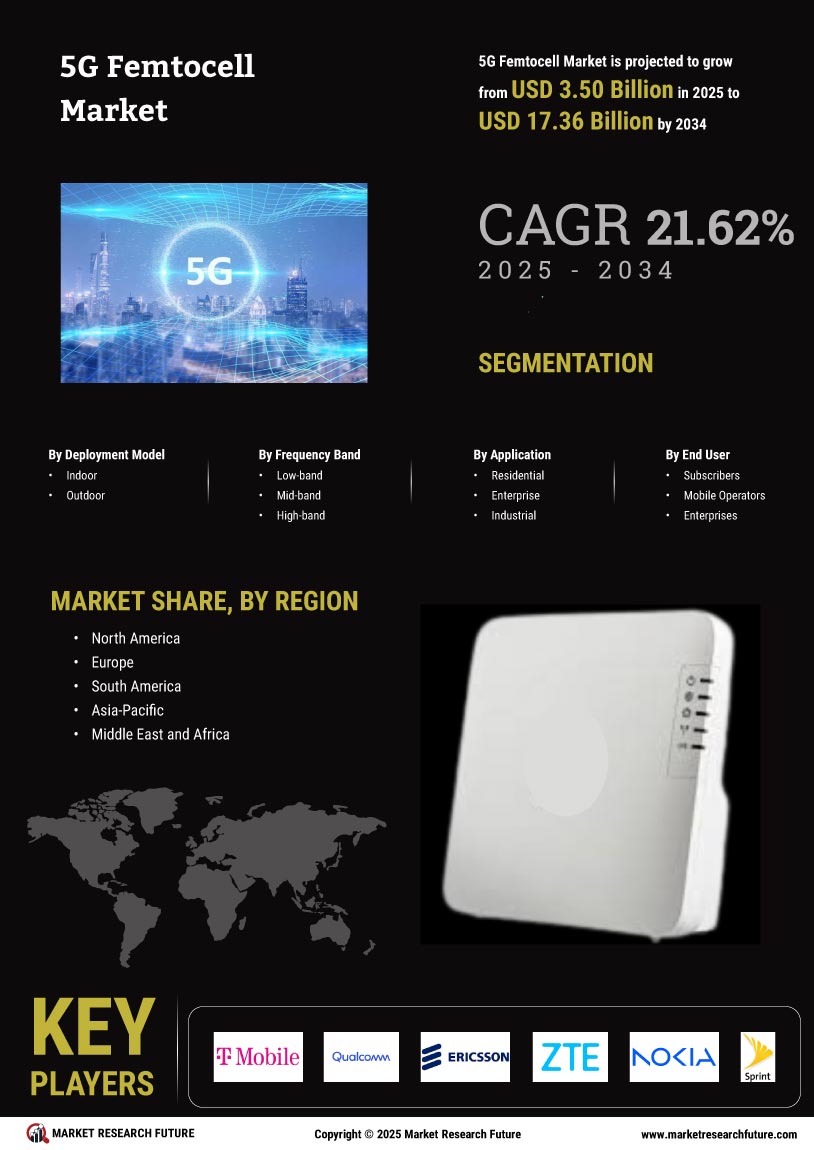Emergence of Smart Cities
The emergence of smart cities is a transformative trend influencing the 5G Femtocell Market. As urban areas evolve to incorporate advanced technologies, the demand for reliable and high-speed connectivity becomes critical. Femtocells are well-suited to support the infrastructure of smart cities by providing localized coverage for various applications, including traffic management, public safety, and environmental monitoring. The integration of femtocells into smart city initiatives can enhance the overall efficiency of urban services and improve the quality of life for residents. As cities strive to become more connected and efficient, the 5G Femtocell Market is likely to see increased adoption of femtocell solutions, driven by the need for robust connectivity to support smart city applications.
Rising Mobile Data Traffic
The 5G Femtocell Market is experiencing a surge in mobile data traffic, driven by the proliferation of smart devices and high-bandwidth applications. As users increasingly rely on mobile connectivity for streaming, gaming, and remote work, the demand for robust network solutions intensifies. According to recent statistics, mobile data traffic is projected to grow exponentially, potentially reaching 77 exabytes per month by 2025. This escalating demand necessitates the deployment of femtocells, which enhance coverage and capacity in densely populated areas. Consequently, service providers are investing in femtocell technology to ensure seamless connectivity and meet user expectations. The 5G Femtocell Market is thus positioned to benefit from this trend, as femtocells provide a cost-effective means to alleviate network congestion and improve user experience.
Increased Adoption of IoT Devices
The proliferation of Internet of Things (IoT) devices is a pivotal driver for the 5G Femtocell Market. As industries and consumers alike embrace IoT technologies, the need for reliable and high-speed connectivity becomes paramount. With billions of connected devices anticipated in the coming years, the existing network infrastructure may struggle to accommodate the surge in data traffic. Femtocells offer a viable solution by providing localized coverage and enhancing network capacity. This is particularly relevant in urban environments where dense populations and numerous devices can lead to network strain. The 5G Femtocell Market is likely to see increased investments as businesses seek to leverage IoT capabilities, thereby driving demand for femtocell solutions that can support the anticipated growth in connected devices.
Government Initiatives and Funding
Government initiatives and funding play a substantial role in shaping the 5G Femtocell Market. Many governments are actively promoting the deployment of advanced telecommunications infrastructure to enhance connectivity and support economic growth. This includes financial incentives for service providers to invest in femtocell technology, which can improve network coverage in underserved areas. Additionally, regulatory frameworks are evolving to facilitate the integration of femtocells into existing networks. As governments recognize the importance of robust connectivity for economic development, the 5G Femtocell Market stands to benefit from increased public and private sector collaboration. This support may lead to accelerated deployment of femtocells, ultimately enhancing network performance and accessibility for users.
Support for Enhanced User Experience
User experience remains a critical focus within the 5G Femtocell Market. As consumers demand faster and more reliable connectivity, femtocells emerge as a solution to enhance user satisfaction. By providing localized coverage, femtocells can significantly reduce latency and improve data speeds, which are essential for applications such as virtual reality and augmented reality. The ability to deliver a seamless experience is crucial for service providers aiming to retain customers in a competitive landscape. Furthermore, the 5G Femtocell Market is witnessing a shift towards personalized services, where femtocells can be tailored to meet specific user needs. This focus on user experience is likely to drive further adoption of femtocell technology, as businesses recognize the importance of maintaining high service quality to foster customer loyalty.


















Leave a Comment